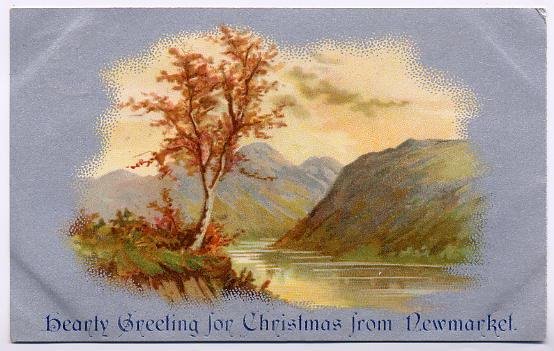Why was the name “Newmarket” only used after 1200 AD, when it began to appear in official documents? After all, Newmarket is a much older place.
After the Norman conquest (1066 AD), the King redivided England into manors, ruled by his appointed Lords. The Newmarket area was given to Exning Manor, so people later wrongly assumed that Newmarket had grown from Exning.
Sir Richard de Argentein, was an important man at King John’s court. He was Sheriff to four counties and was the King’s trusted Cup Bearer. Sir. He already owned several manors before acquiring Newmarket around 1200. Sir Richard was a widower, so he either bought Newmarket as a commercial venture or acquired it when he married Cassandra, daughter of Sir Robert de Insula, Lord of Exning Manor.
The King must have then granted Newmarket a market charter but the document is missing. Another Royal document, issued soon afterwards, refers to Sir Richard’s manor at “Newmarket”. There could not have been an earlier Anglo-Saxon market in Exning because it later, also received a market charter but there is no record of its use.
The Icknield Way was a busy main route, so the Newmarket community thrived by accommodating numerous travellers passing through. Newmarket people were Freemen so, unlike the people of Exning, they were not tied to their Manor. Instead, these tenant farmers paid the Lord rent and worked their own fields alongside his. Their freedom gave them prosperity, providing the incentive to diversify trades and sell or barter spare goods in the twice-weekly market. Brewing ale and baking bread were also essential trades for everyone.
The Christian Church was then society’s social care system. For any medieval community their Parish Church was the centre of life.
Medieval churches were often brightly-coloured inside. As most people were illiterate, many churches had wall paintings depicting Bible stories. Regular Church services were a part of daily life and people gathered in “the Nave” for these. Only clergy could pass the rood (cross) screen into “the Chancel”. The medieval Nave was empty, without seats, except for some at the sides for the old or ill. People stood or knelt on the bare floor. Otherwise, the Nave doubled as a community area.
Feast days and holidays, like Easter and Christmas, brought cheer to hard lives. Christmas especially meant a significant holiday from toil. Church services were at the heart of everything but alongside there were community celebrations, music, food and games.
Sometimes, people mistakenly apply modern ideas and beliefs to earlier people. In many ways medieval people saw life differently to ourselves. An old Christmas carol, believed to have medieval origins, is ‘Jesus Christ the Apple Tree’. This seems bizarre, almost pagan, until you understand that medieval people loved symbolism – especially about Jesus or Biblical events. “The tree of life” is mentioned many times in different Bible texts, e.g: “The tree of life bearing twelve crops of fruit….and the leaves of the tree are for the healing of the nations” (Revelation 22:2). “Like an apple tree among the trees of the forest is my beloved” (Song of Solomon 2:3). The numbers 3 and 12 had special Christian significance. Can you decide why?
Knowing this, the many carvings of “green men” in medieval churches suddenly have new significance. Such artworks spoke plain Christian messages to their contemporaries. Ely Cathedral has 12 different “green men” placed inside it!
- “Jesus Christ the Apple Tree
- “The tree of life my soul has seen
- “Laden with fruit and always green
- “The trees of nature fruitless be
- “Compared with Christ the apple tree”
First published in the Newmarket Flyer and used with permission

